Photo
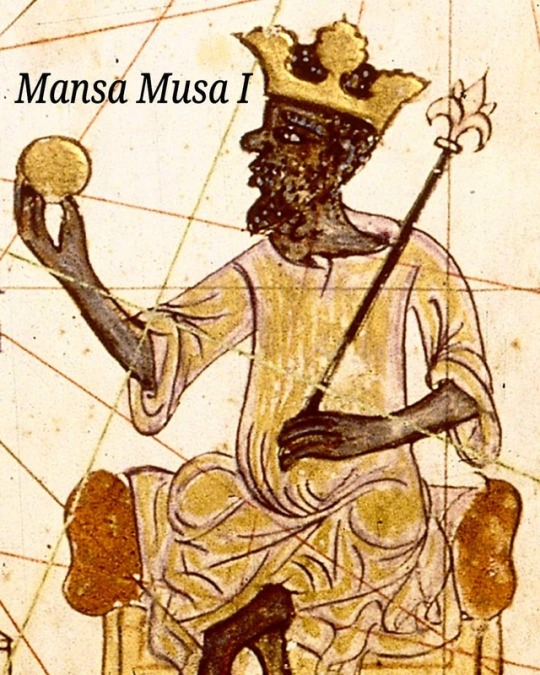
Mansa Musa, or more properly Mansa Musa Keita the First, was the tenth leader of the kingdom of Mali. He was born in the 1280s and ruled from c.1307 to c.1332/1337 (his death year is unclear), after being appointed substitute king by the previous king. They had decided to set out on a voyage around the world, but never returned. Musa was a devout Muslim. As such, he took a pilgrimage to Mecca, which he did during his reign, in 1324. He took along 60,000 people plus 12,000 slaves, and a LOT of gold. He gave gold to the poor he met along the way, which was very generous of him. Unfortunately, Mansa Musa is regarded by historians as perhaps the richest person in history. See, Mali had a lot of gold, and he had his pilgrimage at a time when gold was apparently particularly valued. He gave away so much gold that he inadvertently caused inflation where he went, damaging the economies. To try and fix it, he ended up buying back as much gold as he could from loaners on his way back. On his way back to Mali, he received news that one of his generals, Sagaman-dir, had seized control of Gao, the capital of the Songhai Empire. Since the Songhai was a very large and important area, he was thrilled by this news, and decided to travel straight to it. He had the previous king of Songhai submit to him and took as hostage his two sons. They returned to Niani, the capital of Mali, where the sons were educated. Source: Encyclopedia Britannica - Musa I of Mali https://www.instagram.com/p/Bn4AU2Hh2Q6/?utm_source=ig_tumblr_share&igshid=1dqymbs26ezi4
0 notes
Photo

However, there were big problems with his experiments. Many scientists criticized his ice crystal experiments for not being rigorous enough. According to Stanford Univeristy professor William Tiller, who studied material physics and wrote books on crystallization, if you tweak the cooling rate of ice, or add certain subtances, it can make different sorts of crystals, so there was plenty of room for error or even tampering to make his results questionable. Masaru's only claim to academic certification is a doctorate in alternative medicine from the University of Mumbai, which only requires that you complete one year of study and a research project to obtain it. The rice experiment doesn't seem to have received similar criticisms, but there are many documented cases of people trying it at home, with varied results. As requested by @eucariotmusic. :)
0 notes
Photo

Part 1 Masaru Emoto was a Japanese researcher who became famous after releasing his documentary "What The Bleep Do We Know?", in which he conducted experiments with water and ice crystals, which has been discredited by the scientific community. The experiment went as follows. He took water and crystallized them into ice. However, he added a special set of circumstances. He made it so that each batch of water be directed either positive or negative emotions. For example, one batch of water might labelled with a compliment, verbally given that compliment and others, or even prayed to with positive vibes. Another one might be labelled with an insult, cursed at, yelled at, and/or given prayers of death. Kys, stupid bottle of water. At the end of the experiment, he took pictures of the ice crystals and presented them. He showed that, while the positively enforced water produced pretty crystals, the negatively enforced water produced ugly crystals. He did these experiments for about a decade. His second experiment, which came some years later, involved the same idea, except with rice instead of water. He demonstrated that rice under such conditions would either ferment nicely, giving off a pleasant aroma, or blacken and rot. Furthermore, he added a "control group" batch of rice that received absolutely no attention, which also appeared to have rotted. He wanted to show that neglect was just as bad as negativity, or worse.
0 notes
Photo

Okay, I promised you guys a post over a month ago. Oh dear. Too long. Well, here's one for you. Kinda short, but I'm working on getting one of proper length done. So, queue. Surprisingly, it's pronounced like the letter 'q'. Why? First, we have to break down the letters in the word a bit. So, to begin with, "queue" is a French word, meaning "tail". Becomes it's French, it has French rules. The first 'u' is kinda just needed because almost every 'q' in French has to have one after it. We don't pronounce it, though. It's just there. Also, the last 'e' is also silent. Basically, in French, if a word ends in an 'e' and there's other vowels in the word, almost always that 'e' will be silent. Kinda like how it is in English. We have a lot of words with silent ending Es. What we're left with, then, is "qeu", which reasonably would be pronounced "kyoo".
0 notes
Photo

Another case was featured in an Italian newspaper, La Stampa, dated November 19, 1900. Cesare Lombroso, who is regarded as the father of criminology, was investigating a poltergeist report in a wine shop. He entered the cellar, which was completely dark, and heard sounds of bottles being rolled and glass being broken. He lit some candles, thinking that if it were a spirit, it would go away in the light. However, it did not, and bottles continued to be rolled and broken. He held one of the candles up to the bottles to check for strings or anything that might point to some trick but found none. He noted that as the bottles were being moved, they did not fall from their shelves. Instead, they descended, as if they were being carried by something. He soon left the cellar, and bottles continued to be broken. Explanations of poltergeist activity span the whole spectrum from scientific to spiritualistic. Some think that many poltergeist cases can be attributed to pranksters and people believing it's a poltergeist because they want it to be, while others believe that such activity is caused by people with telekinesis (or psychokinesis) or angry evil spirits. One scientific explanation was the movement of underground water, which was thought could shake a house enough to make things fall down. However, this was tested and the experimenters found that the stress caused by moving water under a house was not enough to do such damage. Other ideas include seismic activity and ball lightning. Thanks for reading! :) I hope you enjoyed this! Let me know what you think in the comments. #eduphile #poltergeist
0 notes
Photo

Poltergeists, whose name comes from German and means "noisy ghost", are spirits known for causing disturbances such as throwing objects and making noises (like knocking). Generally, they will do this sort of thing during the day and when no one is looking, though they will occasionally cause trouble in the night. Tales and reports of poltergeists can be found in pretty much every culture in the world and the oldest accounts date back all the way to the first century AD. One famous poltergeist case is known as The Great Amherst Mystery. It was the late 1870s, in Amherst, Nova Scotia, Canada. Esther Cox was asleep in her bed when a sound like a thunderclap was heard that woke everybody in the house. Soon, strange things started to happen, such as writing in the walls which read "Esther Cox, you are mine to kill." Cold water bubbled as if it were boiling and matches were flung around as if something were trying to set the house on fire. She eventually had to move to a friend's house, where she enjoyed peace for about a month. Then a brush disappeared from her hand as she was cleaning, and soon after, it fell from the ceiling. The spirit made lots of noises, stabbed Esther in the back with a knife, and even piling up chairs in the parlor (basically what we'd call a living room) and making them crash to the ground. These events lasted for about a year before stopping. #eduphile #poltergeist
0 notes
Photo

I was wondering something today. What do you guys like about this account? I know I say it a lot, but it really does mean the world to me (or at least half the world) when someone sends me a message about what I do here. Even a simple "Awesome!" is enough to make me smile and really motivate me to work harder and to pay more attention to how best to educate and entertain. I do this because I know how hard it is to enjoy learning things, even just learn, if person speaking to you or the words you're learning from aren't very clear. And it's just as important to make learning as fun as possible, because that inspires people to study more into things. It's often what can turn an idea into something magical. So this is why I ask you this question so often. You're under no obligation whatsoever to say anything. I'll continue writing these posts regardless because I know that I'm doing some good, that I'm making people smile with the interesting stuff that I'm writing about. I just wanted to talk for a little bit about why I do it, and to ask for your feedback, because few things give me greater joy in life than hearing that I helped someone, especially in this way. Anyways, new post on Monday. I hope you guys enjoy it! :) And as always, thanks for reading!
0 notes
Photo

Odin is also regarded as a god of wisdom because that's what he spends most of his time searching for. He's well known for being away from Asgard (the home of the Aesir gods) for long periods of time as he goes on adventures in search of wisdom. In fact, he's often portrayed as having only one eye, as he sacrificed the other eye for wisdom. Yes, he was willing to give up half of his vision to be smarter. He's very serious about it. Oftentimes these expeditions for wisdom specifically involve wisdom about magic. Along with Freya (a Vanir goddess), they are the two greatest users of shamanistic magic among the gods. As a shaman, he's accompanied by some animals. He has two ravens, Hugin and Munin, who tell him about everything that's going on in the nine worlds, and Geri and Freki, two wolves that he feeds at his dinner table. Fun fact, Odin gives those wolves all of his food. According to him, wine is both his food and drink. Also, shamans traditionally go through a sort of rebirthing in order to gain their powers. According to one legend, he "sacrificed himself to himself" by hanging from the world tree Yggdrasil for nine days and nights, without any nourishment. At the end, the magical runes with which the tree was inscribed with were revealed to him, and he gained awesome power through this knowledge. Lastly, he has the title of god of the dead. This comes from the Romans more, as when they wrote about Odin, they compared him to Mercury (aka Hermes), because he acts as a guide for the dead. Odin's main relation to death is Valhalla, which is the place he uses to house the fallen warriors that he gathers to fight in the apocalyptic battle Ragnarok, in which many major figures in the mythology fight to the death. Thanks for reading! :) I hope you enjoyed this article! #eduphile #odin #norse #mythology
0 notes
Photo
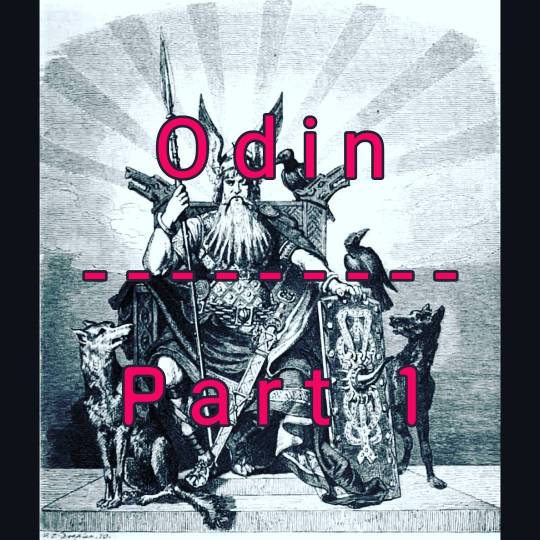
Odin is a prominent figure in Norse mythology, as he is the ruler of Aesir, one of two tribes of Norse deities (the other being the Vanir). Because he holds this position, he is the god of rulers and elites. However, he's also the god of war, wisdom, magic, poetry, and the dead. His title as god of war comes from the origin of his name. His Norse name is Óðinn, which is pronounced "oh-thin", where the 'th' is pronounced like it is in "then". This name is made up of two other words. Óðr, meaning ecstasy or fury, and -inn, a suffix meaning "master of". So, essentially, he's the master of fury, which fits in with the theme of war. He's known to favor certain warriors, though in keeping with his role as god of the elites, he only favors the best warriors. His title as god of poetry arises from the Mead of Poetry in his possession, a drink which he stole from the Norse giants. The mead's Norse name is Óðrœrir, meaning "stirrer of ecstasy", which directly connects to his name. Anyone given this mead will be able to compose magnificent poetry at will, which is a great gift in Odin's eyes (or eye). This poetry aspect goes deeper, though. Norse poets are often individuals who question or even reject societal norms, and as such are a more eccentric crowd that sometimes become outlaws. For this reason, Odin is not only the god of leaders and elites, but also a god of the outcasts. See, there's another god, Tyr, who is the Norse god of law, and as such he is also a leader, though a more firm and level headed one. Odin is more of a devious and creative ruler. #eduphile #odin #norse #mythology
0 notes
Photo
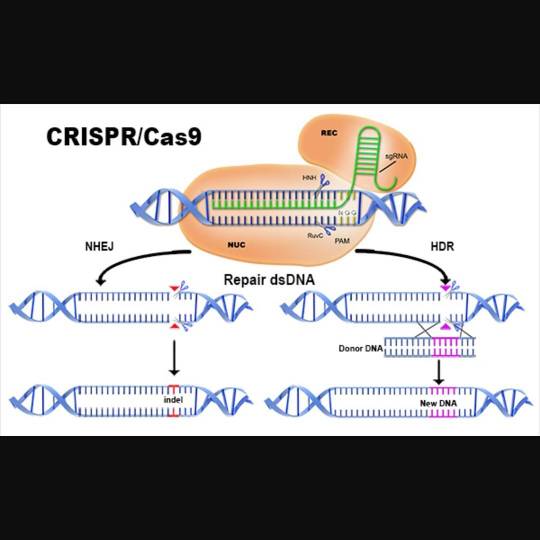
CRISPR is the immune system of prokaryotic DNA. More specifically, CRISPR and the Cas proteins make up the immune system. CRISPR is a chain of the cell's own DNA sequences interspersed with the DNA of bacterial predators the cell has previously encountered, such as bacteriophages (literally "bacteria eaters"). A prokaryote is basically like the cell of any plant or animal, except all it is is a cell wall, some fluid, and a tangled mess of plasmids, which have the cell's DNA, plus a few organelles (cell organs). CRISPR and Cas work together to defend the prokaryote cell against predators. How? Well, the first step is for the Cas1 and Cas2 proteins to take a piece of the enemy's DNA and place it inside CRISPR. Then, later, when an enemy cell comes along with the same sort of DNA, various Cas genes split apart a copy of the certain DNA in CRISPR necessary to take care of the invader. There are several different Cas genes, and depending on which of the three types of CRISPR/Cas immunity system you're looking at, different Cas genes will have different jobs. For example, in type 1, Cas6e and Cas6f do the job of cutting apart the DNA. In type 2, this job goes to Cas9 and a special thing called RNase 3 (more on this later). In type 3, the job goes to Cas6, and all of these guys do their job in different ways. After the splitting occurs, these DNA segments pair up with Cas proteins and dissolve the enemy's DNA. This system is being used by scientists to find ways of making genetic engineering easier. For example, one could use the CRISPR/Cas system to cut out a damaged gene within someone's DNA and replace it with a better one, thereby possibly curing any genetic disease! And there are many, many other potential applications for this technology. :) Thanks for reading! :D Hope you guys enjoyed it! Be sure to let me know if you have any thoughts by posting a comment. Or Kik, if you have it. #sophistproject #crispr #genetics #science #dna
1 note
·
View note
Photo

In 1992, seven of Marvel's best artists left the company to form Image Comics, which caused a significant blow to Marvel. A few years later they would outsource their comics to Image Comics (outsource means they paid money to Image to make some of their comics). Then the comic industry went into decline and the Marvel Entertainment Group (MEG - Marvel's parent company) went bankrupt in 1996. The next year, MEG merged with Toy Biz, bringing them out of bankruptcy. With the new millennium, Marvel ended their association with the Comics Code Authority and created their own ratings system. They also started making films and TV series based their characters and stories. Men in Black, for example, was released in 1997 and was acquired by Marvel when they bought its previous owner, Malibu Comics. Others included Blade, X-Men, and Spiderman. Then in 2009, Disney bought Marvel for 4 billion dollars. Hi, guys! :) I really hope you enjoyed this little article on the history of Marvel Comics! It's been freakin' ages since I really posted anything, so it's gonna take a bit to get back in the habit. I will do my utmost to bring you another one this week. Next Monday at the latest. Also I have a super duper extra special and really awesome announcement coming soon! :D Stay tuned! And keep having fun with learning! Thanks for reading! #sophistproject #marvel #comics #marvelcomics
0 notes
Photo

By the 1960s, Atlas Comics re-branded to Marvel Comics, and began making comics about superheroes again. This was because DC Comics were getting back into it first, showing that superheroes were popular again. However, Stan Lee revolutionized the comic industry by writing stories about superheroes that were more mature and human. They argued more and didn't have secret identities. This was a contrast to the more perfect heroes (such as perhaps Superman). In fact, Spiderman became Marvel's most successful comic book series ever, selling over 360 million copies to date. In 1971, the US Departments of Health, Education, and Welfare asked Stan Lee to write a story about drug abuse. Stan Lee proceeded to write a three part Spiderman story with an anti-drug message. The Comic Code Authority, unfortunately, was like, "No way are we publishing that. Not even if the government asked you to write it.", so with Goodman's support, he published it without the CCA. The 70s saw the return of Marvel Comics expanding the number of genres they made stories for. These stories included "Howard the Duck" (who looked so similar to Donald Duck that Disney nearly sued them) and "Shang Chi: Master of Kung Fu". Marvel also suffered losses in the middle of the decade because the newsstand network (through which they sold their comics) was in decline. Fortunately, they made back their losses because comic companies started selling through comic book stores, which were a new thing created in response to the decline. #sophistproject #marvel #comics #marvelcomics
0 notes
Photo

Marvel Comics was initially founded as Timely Publications in 1939 by Martin Goodman, who used to publish Westerns in magazines. In fact, he started his new line of comic books from the very offices he'd been publishing said magazines. The first issue was released in October and featured the Human Torch (who has nothing to do with the one in the Fantastic Four) and Namor the Sub-Mariner. The next issue was released the next month. The two issues combined sold nearly 900,000 copies, so they were a great success. In 1941, Captain America featured in his first comic, which sold nearly 1 million copies. Probably because the US was in WWII, and patriotism was a popular topic. Later, Goodman had promoted Stanley Lieber, his wife's cousin, to editor. His pseudonym was Stan Lee. By the time WWII was over, superheroes gradually became less popular, and the 1950s saw Timely Publications turn into Atlas Comics. At this time, while they tried to make a few superhero stories successful in 1953 and 1954, they mostly published stories in basically any genre one could possibly come up with, from war and comedy to horror, spy stuff, and Biblical stories too. Stan Lee later said that they only survived during that time because they were able to quickly make acceptable comics. There was also the Comic Code Authority during this time. It was basically a group of comic publishers, distributors, and company founders who were convinced by a guy who wrote an article saying that violence in comics was corrupting the youth (sound familiar?). So starting in late 1954, all comics had to be approved by them before they could be published. #sophistproject #marvel #comics #marvelcomics
0 notes
Photo

I AM ALIVE, MY FRIENDS. I HAVE NOT FORGOTTEN YOU. I DOTH HATH RETURNED. XD Soooo....it's been a while? How are you guys? :) Hope you're doing well! Sorry I've been away so long. Too long, I think. I've gotten out of the habit of writing posts. °u°` I'm so lazy! But I really want to start up again! This is my passion, to teach you all this cool stuff in our world, so Im'a do it! Until the day I die! :D Over the summer I was working eight hours a day designing software at an R&D place. Plus I was taking a history class, so I have little energy to spend researching and writing for you guys. It was stressful finishing those two posts on mirror neurons, and there's still more to say about those things! So, mark your calendars! STARTING SEPTEMBER 12, THE SOPHIST PROJECT* WILL RESUME POSTING DELICIOUSLY AWESOME AND INCREDIBLY INTERESTING EDUCATIONAL MATERIAL TO YOUR EYES AND BRAIN. It's gonna be awesome! There's a world of stuff to talk about, so may the conversation never run dry! And as always, if you have ANY FEEDBACK, or ANY SUGGESTIONS FOR ARTICLES, please leave me a comment! ^_^ It would bring me no greater pleasure than to see you guys gushing about stuff and asking me to write about the stuff you gush about. Whatever you want, I shall provide! Alrighty, see ya then! And don't forget to keep learning and thinking, my friends! :D Thank you so much for learning with me! (ps - if you don't feel like commenting and have a Tumblr, shoot me a message at zir-314)
0 notes
Photo
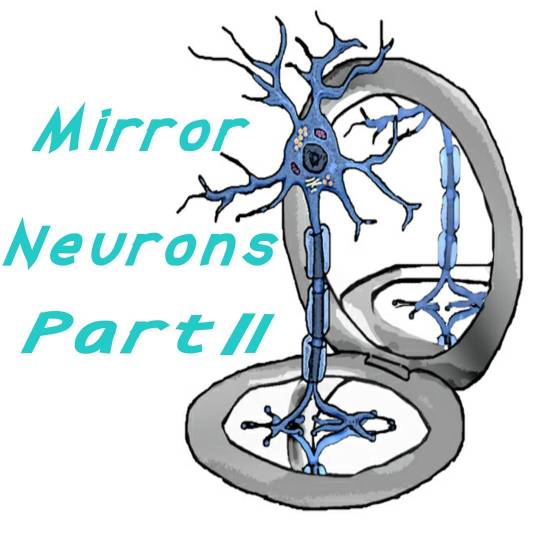
It's very difficult to analyze single neurons within the human brain, so most of the evidence for mirror neurons in our brains is indirect. fMRI scans have shown that mirror neuron-like activity can be found in the inferior frontal cortex (a bit above the ear and towards the front) and the superior parietal lobe (top of your head, about 70% towards the back). These have therefore been defined as the human mirror neuron system. In 2010, a study was published involving 21 patients with uncontrollable seizures. They had electrodes placed onto exposed parts of their brain in an attempt to find out where their seizures were happening, so that they could possibly perform surgery on the areas. The electrodes were placed according to medical criteria and any researchers involved simply used whatever data they could get to further their studies. They found some neurons showing mirrorness qualities, as well as some anti-mirror neurons (they activated when an action was performed but were inhibited when the action was witnessed). The mirror neuron activity was found in the supplementary motor area and the medial temporal cortex (which is not to say they couldn't have also been elsewhere, they just didn't analyze the whole brain). Thanks for reading! :) Please, feel free to tell me what you think of this post! #sophistproject #science #neuron #mirrorneurons #brain
1 note
·
View note
Photo
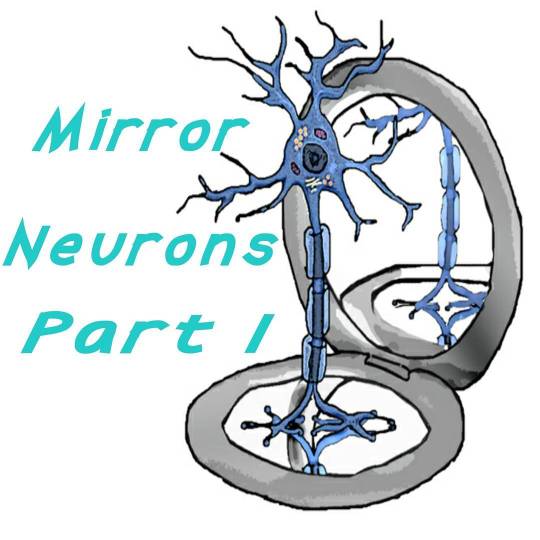
A mirror neuron is any neuron that fires both when one sees an action and when one performs that action themselves. It's not known why they exist in humans. One theory is that they're used for imitative learning. For example, suppose one were to watch someone bend over to pick something up. Mirror neurons might fire off as they imagine themselves doing the same thing. This could make learning motor skills easier. Another theory is that mirror neurons are more associated with language skills. Supporters of this theory argue that mirror neurons help to understand the motives of others. In 2005, Marco Iacoboni, a neuroscientist at the University of California in Los Angeles, published a study. He talked about how people could tell from watching a person pick up a cup of tea from a table, whether they were drinking from it or clearing it off the table. In the study, 23 subjects watched grasping hands without context, context only, and grasping hands in two different contexts. As the subjects watched these happen, their brains were scanned using functional magnetic resonance imaging, which basically uses magnetic fields to monitor blood flow. According to the fMRI scans, as the subjects watched the actions with the contexts (compared to the other two stimuli), there was a significant increase in brain activity in the parts of the brain where hand actions take place. Their conclusion was that mirror neurons not only recognized actions but also understood the intentions behind them. Iacoboni further states that mirror neurons are the origin of empathy. Thanks for reading! :) Let me know what you think about it! I love hearing what people have to say about my posts! #sophistproject #neurons #brain #science #mirrorneurons
0 notes
